Fox Terriers Dog
- February 2, 2024
- 0 comment
Fox Terriers are spirited and intelligent small to medium-sized dogs that have charmed their way into the hearts of dog enthusiasts worldwide. With origins dating back to 18th-century England, they were initially bred for fox hunting, making them agile, fearless, and tenacious. These terriers come in two main types: Smooth Fox Terriers with sleek, short coats, and Wire Fox Terriers with dense, wiry fur. Both share a predominantly white coat with colored markings.

Known for their lively personalities, Fox Terriers are incredibly loyal, playful, and intelligent, making them ideal companions for families and active individuals. They require regular exercise, mental stimulation, and socialization to thrive. While their energetic nature can bring joy to households, they may exhibit territorial or independent behaviors if not properly trained and socialized. Regular grooming and veterinary check-ups are essential to maintain their health and well-being. Fox Terriers have a relatively long lifespan, often living between 12 to 15 years, and they continue to be cherished pets and occasional stars in the world of literature and film.
| Characteristic | Description |
|---|---|
| Breed Origin | England |
| Types | Smooth Fox Terrier, Wire Fox Terrier |
| Size | Small to Medium-sized |
| Height (At Shoulder) | 13 to 16 inches (33 to 41 cm) |
| Weight | 15 to 20 pounds (7 to 9 kg) |
| Coat Type | Smooth or Wire |
| Coat Color | Predominantly White with Colored Markings |
| Lifespan | 12 to 15 years |
| Temperament | Loyal, Intelligent, Playful, Fearless |
| Exercise Needs | High, Requires Regular Exercise and Play |
| Socialization | Early Socialization is Important |
| Trainability | Intelligent but May Be Independent |
| Common Health Issues | Hip Dysplasia, Patellar Luxation, Allergies, Deafness, Lens Luxation, Skin Problems |
| Grooming | Regular Brushing, Nail Trimming, Ear Cleaning (Wire Terriers may require hand-stripping) |
| Suitable for Apartments | Can Adapt with Adequate Exercise and Stimulation |
| Prey Drive | Strong, May Chase Small Animals |
| Barking Tendency | Vocal, May Bark to Alert or Express Excitement |
| Good for First-time Owners | Requires Dedication to Training and Exercise |
| Rescue Organizations | Yes, Breed-specific Rescues Available |
Fox Terriers: The Energetic and Adorable Canine Companions

Fox Terriers, with their charming personalities and boundless energy, are a delightful addition to any family. In this comprehensive guide, we will delve into the fascinating world of Fox Terriers, exploring their history, characteristics, care, and more. Get ready to embark on a journey of discovery about these spirited little canines.
Origin and History
The origin and history of Fox Terriers trace back to 18th-century England. These lively and tenacious dogs were initially bred for their remarkable hunting skills. Here’s a closer look at their fascinating history.
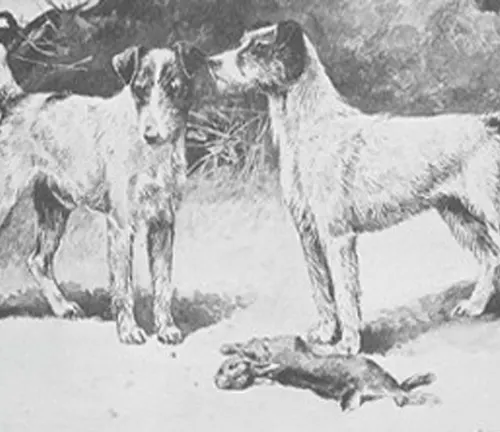

- Fox Hunting Roots: Fox Terriers were primarily bred for fox hunting. In the 18th century, English hunters required small, agile, and fearless dogs that could pursue foxes and other small game animals, including vermin, down narrow burrows and dens.
- Recognition and Development: By the 19th century, Fox Terriers had gained recognition as a distinct breed. Their white coats with colored markings made them easily distinguishable during hunts. These markings also ensured that hunters could identify them amidst the chaos of a foxhunt.
- Separation into Types: Over time, Fox Terriers were categorized into two main types: Smooth Fox Terriers and Wire Fox Terriers, each with its unique coat and appearance characteristics. These two types have their own distinct fan bases and are recognized as separate breeds in some parts of the world.
Physical Characteristics
Fox Terriers are known for their distinctive and charming physical characteristics. Here are the key features of their appearance:

- Size: Fox Terriers are small to medium-sized dogs. They typically stand between 13 to 16 inches (33 to 41 cm) at the shoulder and weigh around 15 to 20 pounds (7 to 9 kg).
- Coat: There are two main types of Fox Terriers based on their coat: Smooth Fox Terriers and Wire Fox Terriers.
- Smooth Fox Terriers: These have a sleek, short, and dense coat that lies flat against their body, giving them a glossy appearance.
- Wire Fox Terriers: They have a dense, wiry, and harsh coat that provides protection against the elements. Their fur often forms a distinctive beard on their face.
- Color: Fox Terriers typically have a predominantly white coat with colored markings. Common colors include black, tan, or black and tan, often on the head and ears.
- Head: They have a wedge-shaped head with a well-defined stop (the point where the forehead meets the muzzle). Their dark, expressive eyes are small and lively.
- Ears: Fox Terriers have V-shaped ears that stand erect, giving them an alert and attentive expression.
- Tail: Their tail is set high and carried erect. It is usually docked to a short length, giving them a neat appearance.
- Legs and Body: They have straight, sturdy legs and a muscular body. Their chest is deep, and their back is level and strong.
- Expression: Fox Terriers are known for their lively and intelligent expression, often characterized by a keen and alert gaze.
Temperament and Personality
Fox Terriers are known for their unique temperament and lively personalities, making them beloved companions for those who appreciate their spirited nature. Here are the key traits that define the temperament and personality of Fox Terriers:



- Intelligence: Fox Terriers are highly intelligent dogs. They have keen minds and quick problem-solving abilities, which make them relatively easy to train.
- Loyalty: These dogs are fiercely loyal to their owners and form strong bonds with their families. They thrive on human interaction and affection.
- Playfulness: Fox Terriers are playful and have boundless energy. They love interactive games and playtime, making them excellent companions for active individuals and families.
- Fearless: Despite their small size, Fox Terriers are known for their fearlessness. They have a brave and tenacious nature, which can sometimes lead to them taking on larger opponents.
- Alertness: Fox Terriers are naturally alert and make excellent watchdogs. They will bark to alert their owners to any perceived threats or changes in their environment.
- Curiosity: These dogs are inherently curious and love exploring their surroundings. They have a tendency to investigate everything they encounter.
- Affectionate: Fox Terriers are affectionate and enjoy being part of the family. They often seek attention and physical closeness with their owners.
- Independent Thinkers: While they are trainable, Fox Terriers can be independent thinkers. They may test boundaries or engage in mischievous behavior if not properly stimulated and trained.
- Socialization: Early socialization is essential for Fox Terriers to ensure they get along well with other dogs and pets. With proper introduction, they can be friendly and sociable.
- Chasing Instinct: Due to their hunting background, Fox Terriers have a strong instinct to chase small animals, such as squirrels or birds. This trait should be managed in a controlled environment.
Training and Socialization
Training and socialization are essential for Fox Terriers to ensure they become well-behaved and well-adjusted companions. These lively and intelligent dogs benefit from structured training and positive interactions with other dogs and people. Here are some guidelines for proper training and socialization of Fox Terriers:


- Early and Positive Socialization: Start socializing your Fox Terrier puppy early to expose them to various people, dogs, and environments. Ensure that these interactions are positive and encourage gentle play to build their confidence and sociability.
- Consistent Positive Reinforcement: Use positive reinforcement techniques like treats, praise, and toys to reward good behavior during training. Consistency in commands and rewards helps your Fox Terrier understand and follow your expectations.
- Regular Exercise and Mental Stimulation: Fox Terriers are energetic and intelligent dogs. Provide them with both physical and mental exercise through daily walks, playtime, and interactive toys. Mental stimulation is crucial to prevent boredom and destructive behavior.
Health and Common Issues
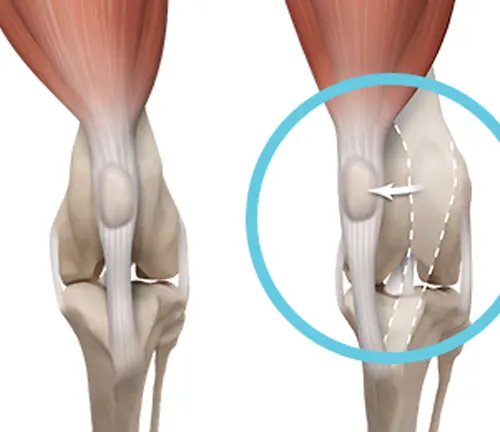


Fox Terriers are generally healthy dogs, but like all breeds, they can be prone to certain health issues. Being aware of these common health concerns and providing proper care can help ensure a long and happy life for your Fox Terrier. Here are some health issues to watch out for:
- Hip Dysplasia: Fox Terriers can be susceptible to hip dysplasia, a genetic condition where the hip joint doesn’t develop properly. This can lead to arthritis and lameness. Regular exercise, a balanced diet, and maintaining a healthy weight can help reduce the risk.
- Patellar Luxation: This condition involves the dislocation of the kneecap, causing discomfort and lameness. It can range from mild to severe and may require surgical correction in severe cases.
- Allergies: Fox Terriers may develop allergies to various environmental factors (such as pollen or dust) or food. Allergies can cause skin itching, ear infections, and digestive issues. Consult with a veterinarian to identify and manage allergies.
- Deafness: Some Fox Terriers, particularly the all-white ones, can be prone to congenital deafness. Regular hearing tests can help detect any hearing issues early.
- Lens Luxation: This is a genetic eye condition in which the lens becomes displaced, potentially leading to glaucoma and vision loss. Prompt veterinary attention is crucial if lens luxation is suspected.
- Legg-Calve-Perthes Disease: This condition affects the hip joint and can lead to limping and pain. It often requires surgical treatment.
- Skin Issues: Fox Terriers may be prone to skin problems like dermatitis or hot spots. Regular grooming and a healthy diet can help prevent skin irritations.
- Cataracts: Older Fox Terriers may develop cataracts, which can affect their vision. Regular eye check-ups can help monitor and manage this condition.
- Luxating Patellas: Some Fox Terriers may have issues with their kneecaps slipping out of place, causing discomfort. Proper exercise and maintaining a healthy weight can help prevent this problem.
- Dental Health: Dental issues, including tartar buildup and tooth decay, can affect Fox Terriers. Regular teeth cleaning and dental care are essential for maintaining their oral health.
Lifespan and Aging
Fox Terriers have a relatively long lifespan for a small to medium-sized breed, typically ranging from 12 to 15 years. However, like all dogs, they go through various stages of aging as they grow older. Here’s an overview of the lifespan and aging process of Fox Terriers:
- Puppyhood (0-2 Years): This is the playful and energetic stage of a Fox Terrier’s life. They are full of curiosity and need socialization, training, and exercise to develop into well-rounded adults.
- Young Adult (2-7 Years): During this phase, Fox Terriers are in their prime. They are active, alert, and often at the peak of their physical fitness. Regular exercise and mental stimulation are essential to keep them happy and healthy.
- Middle-Aged (7-10 Years): Fox Terriers begin to enter their middle-aged years, and you may notice some subtle changes in their energy levels. They might slow down a bit, and their exercise requirements may decrease slightly. Regular veterinary check-ups become crucial to monitor their overall health.
- Senior (10+ Years): At around 10 years or older, Fox Terriers are considered seniors. They may experience more significant changes in their physical abilities and overall health. Common signs of aging include reduced activity, joint stiffness, and potential dental issues.
- Geriatric (15+ Years): If a Fox Terrier reaches the age of 15 or older, they are considered geriatric. At this stage, they may require special care, including a senior-specific diet, joint supplements, and more frequent vet visits. Their activity level will likely decrease significantly.


Famous Fox Terriers
Fox Terriers have made their mark in the world of pop culture and literature, both as fictional characters and real-life companions of famous individuals. Here are a few famous Fox Terriers:
Snowy (Milou)
Snowy is a fictional Wire Fox Terrier and the loyal companion of Tintin, the famous Belgian comic book character created by Hergé. Snowy is known for his intelligence and wit, often helping Tintin in his adventures.

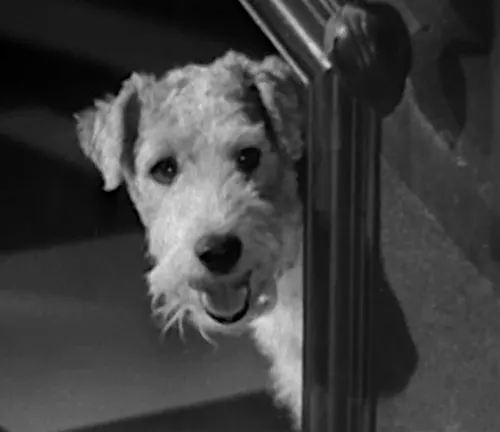
Asta
Asta, a Wire Fox Terrier, became famous for his appearances in the “Thin Man” series of detective films in the 1930s and 1940s. Asta was the loyal pet of the witty detective Nick Charles and his wife Nora in the movies.
Daisy
Daisy was the name of the Wire Fox Terrier owned by popular American author E.B. White. White featured Daisy in his children’s book “The Trumpet of the Swan,” adding a charming character to the story.
George
George, a Smooth Fox Terrier, gained fame as the companion of U.S. President Franklin D. Roosevelt. George was known for his lively personality and often appeared in photographs alongside the President.
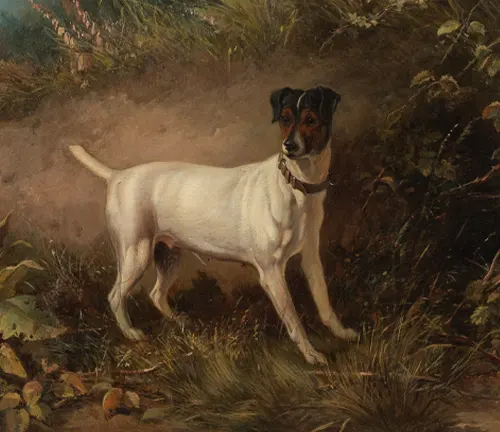
Iggy
Iggy, a Smooth Fox Terrier, belonged to the American actress and singer Grace Kelly. Iggy was frequently seen with Kelly during her time as Princess of Monaco and became a beloved royal pet.
Different Species
Smooth Fox Terrier
The Smooth Fox Terrier is known for its sleek and short coat, which lies flat against the body. They have a glossy appearance and are characterized by their predominantly white coat with colored markings, which are often black, tan, or black and tan. Smooth Fox Terriers are agile, energetic, and known for their lively personalities.


Wire Fox Terrier
The Wire Fox Terrier, as the name suggests, has a dense, wiry, and harsh coat. Their fur forms a distinctive beard on their face, giving them a rugged appearance. Similar to Smooth Fox Terriers, Wire Fox Terriers also have predominantly white coats with colored markings. They are equally energetic and intelligent, making them excellent companions.
Frequently Asked Question (FAQs)
1. What is the origin of Fox Terriers? Fox Terriers originated in 18th-century England, where they were bred for fox hunting and small game hunting. They were developed by crossing various terrier breeds to create agile and fearless hunting dogs.
2. What are the main types of Fox Terriers? The main types of Fox Terriers are Smooth Fox Terriers and Wire Fox Terriers. Smooth Fox Terriers have short, sleek coats, while Wire Fox Terriers have dense, wiry coats. Both types share similar characteristics and are recognized as the same breed in some regions.
3. How big do Fox Terriers typically grow? Fox Terriers are small to medium-sized dogs. They typically stand between 13 to 16 inches (33 to 41 cm) at the shoulder and weigh around 15 to 20 pounds (7 to 9 kg).
4. What is the life expectancy of Fox Terriers? Fox Terriers have a relatively long lifespan, often ranging from 12 to 15 years with proper care.
5. Are Fox Terriers good family pets? Yes, Fox Terriers can make excellent family pets. They are known for their loyalty, intelligence, and playful nature, which can make them great companions for families.
6. Do Fox Terriers get along with children? Yes, Fox Terriers generally get along well with children. Their playful and energetic personalities make them suitable for families with kids.
7. Are Fox Terriers aggressive toward other dogs? Fox Terriers can be territorial and may display aggression toward other dogs of the same sex, especially if not properly socialized. Early socialization is essential to ensure good behavior around other dogs.
8. What kind of exercise do Fox Terriers require? Fox Terriers have high energy levels and require regular exercise. They benefit from daily walks, playtime, and mentally stimulating activities.
9. What is the grooming routine for Fox Terriers? Grooming requirements vary between Smooth and Wire Fox Terriers. Both types need regular brushing, nail trimming, and ear cleaning. Wire Fox Terriers may require hand-stripping to maintain their coat’s texture.
10. What are common health issues in Fox Terriers? Common health issues in Fox Terriers include hip dysplasia, patellar luxation, allergies, deafness, lens luxation, and skin problems. Regular veterinary check-ups are essential to monitor their health.
11. Do Fox Terriers shed a lot? Fox Terriers are considered low to moderate shedders. Regular grooming can help minimize shedding.
12. Are Fox Terriers suitable for apartment living? Fox Terriers can adapt to apartment living if they receive sufficient exercise and mental stimulation. However, they thrive in homes with access to a yard for play.
13. Do Fox Terriers bark excessively? Fox Terriers are known to be vocal and may bark to alert their owners or express excitement. Proper training can help manage excessive barking.
14. Are they easy to train? Fox Terriers are intelligent but can be independent thinkers. They benefit from consistent, positive reinforcement training methods.
15. What is the difference between Smooth and Wire Fox Terriers in terms of temperament? Smooth and Wire Fox Terriers share similar temperaments, with Wire Fox Terriers often being slightly more independent and assertive.
16. Can Fox Terriers be left alone for extended periods? Fox Terriers may become anxious or bored when left alone for long periods. They thrive with human companionship and are best suited for households where someone is often present.
17. Are Fox Terriers good for first-time dog owners? Fox Terriers can be suitable for first-time dog owners if they are committed to proper training and exercise. However, their energy and strong-willed nature may require extra dedication.
18. Do they have a strong prey drive? Yes, Fox Terriers have a strong prey drive due to their hunting background. They may chase small animals like squirrels or birds if not properly controlled.
19. How can I socialize my Fox Terrier effectively? Effective socialization involves exposing your Fox Terrier to various people, animals, and environments from a young age. Positive interactions and obedience training are essential for socialization.
20. Are there rescue organizations for Fox Terriers? Yes, there are rescue organizations and breed-specific rescues dedicated to Fox Terriers. These organizations provide a chance to adopt and provide a loving home to Fox Terriers in need.






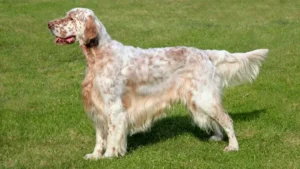


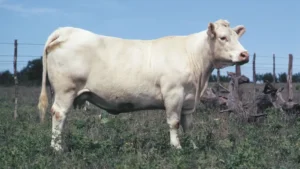




Leave your comment